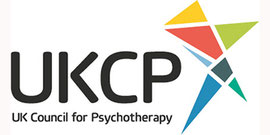The children’s story, ‘We’re Going on a Bear Hunt,’ by Michael Rosen, offers a good metaphor for the journey we take towards healing. In this article, I use this classic piece of children’s literature to illustrate the internal conflict within our minds that often trips us up.
In the story, four children go on a bear hunt. ‘What a beautiful day!’ they declare. ‘We’re not scared.’ On their journey to find the bear, they are faced with a number of dilemmas. Thick, oozy mud, a big dark forest, a deep cold river. Each time they encounter a problem, they realise there is no way around it. The only way to go forward is to go through.
German author and psychology professor, Dr Franz Ruppert, proffers a model to show how the mind survives trauma, which helps to elucidate the uneven nature of the therapy terrain and the obstacles we encounter. Ruppert (2014) explains the psyche's response to trauma by showing how the mind splits in order to cope. When we are touched by a traumatic experience, we hold within us sensory and bodily memories, feelings and perceptions. This is our 'traumatised part,' and it threatens to overwhelm us. It threatens our survival.
Distinguishing four types of trauma, Ruppert defines the triggers for our traumatic experience as follows. 1/ Loss trauma, whereby early separation and loss has inflicted on us unbearable psychic pain. 2/ Existential trauma, whereby a life threatening experience beyond our control, such as an operation, violent attack or accident, has caused us physical pain and suffering. 3/ Bonding trauma, whereby we were unable to develop a secure attachment to our caregivers. 4/ Bonding system trauma, whereby parental trauma is passed and felt through the generations, also known as intergenerational trauma.
In order to protect us from further pain, this traumatised part needs to be isolated and bordered up in the recesses of our mind. Our psyches are remarkably adept at keeping watch over this traumatised part. Like an internal militia, our ‘survival part’ is on high alert for any experience that might trigger our original trauma. This is essential for our survival. It is how we cope.
The problem with our survival self, is that it comes at a psychological price. This inner militia demands that we make huge sacrifices to keep our traumatised self safe. So it may tell us to avoid intimate relationships, steering us away from feelings, such as hurt and abandonment, which live on in the protective bunker of our mind. It may tell us to have just one more drink, to prevent uncomfortable feelings emerging. It may require us to send our pain out into others, to protect us from the pain cooped up in our psychic cave. Relationships, health, jobs and wellbeing are all at risk of sacrifice for the sake of our traumatised self.
How then, can we heal? Besides the traumatised part and the survival part of our mind, Ruppert tells us, resides our ‘healthy part.’ This is the self that can feel, empathise, love and mourn. This is the part that leads us towards health, psychological healing and growth.
Yet this is why the path to healing can feel rocky. Remember, that inner militia, our survival self, is hyper-alert to our pain and fully invested in protecting us from experiencing it. When we enter therapy, our survival parts and healthy parts are in conflict. The former claws at us to retreat and submit to its protective ways.
When we enter therapy and begin to explore our difficulties, we are likely to be faced with some painful feelings, thoughts, memories or perceptions. We may feel confused or uncertain. We may struggle to see the way ahead. This is the mud, the dark forest, the cold, deep river of our minds.
Like the children in the story, we look for ways around. Our survival self wants us to go over or under, but never through. Yet the only way to go, as the children discover, is through. That is the only way to go forward. Healing, growth and self-discovery lie ahead, but the psychic terrain can feel unforgiving at times.
Notice in the story, the children do not set out alone. They hold hands, the big children carry the smaller children. In order to take a risk, to take tentative steps towards growth and discovery, children have an innate awareness of their need to be held.
As adults, though primed to value our independence, we still need psychological ‘holding’ in times of stress, a concept theorised by the psychoanalyst and paediatrician Donald Winnicott. Therapy can offer this psychological holding. With someone walking beside us on our journey, our healthy self is more able to find the strength to stand fast against our internal militia.
Yet what lies ahead when we come face to face with the bear? What might the bear represent? When the children encounter the bear, they are terrified. They escape and run home, dive under the duvet covers and will him away.
Get to our front door.
Open the door.
Up the stairs.
Oh no!
We forgot to shut the door.
Back downstairs.
Shut the door.
Back upstairs.
Into the bedroom.
Into bed.
Under the covers...
I think of this bear as our traumatised self, safe in the bunker of our mind. It doesn’t have to be a bear. We may have an image that comes to us in dreams - a wild dog, an ogre perhaps. If this represents our traumatised self, it is possible, like the children, we will find the bear too terrifying to encounter. Our minds may, too, need to shut the metaphorical door, in order to stay safe.
This may seem gloomy. But what if this isn’t the end of our story? What if this story goes on? Great storytelling invites the reader to continue the story and wonder what happens next. Imagine that the children try again. What if, each time the children go back, they find the bear a little tamer, a little smaller, a little less terrifying?
Therapy may lead us through storms and rivers and bracken. We may not need to encounter the bear at all. That may not be our narrative. We may discover enough about ourselves, becoming well enough attuned with our healthy self, that we can turn back and continue with our lives, psychologically richer and healthier. Or we may encounter the bear and turn home.
The children in the story proclaim: We’re not going on a bear hunt again.
Therapy might last just a few weeks, while some people will decide to continue on their journey over several years. Others may come for a bit, get on with their lives, and later return, ready to take a new journey. There is no right or wrong.
We can only try and be guided by our healthy self. We can learn to observe and notice what is happening within us, what our limits are, what we are ready to discover. One day we might return to that cave and take another look at our inner bear. We might see that we are less afraid.
However we choose to map our journey, we will need to be prepared at times to listen to the inner voice of our healthy self and, like the children in the story, go through... in order to feel fully alive.
This article was first published here on The Counsellors Cafe
References
Rosen, M. (1989) We’re Going on a Bear Hunt. Walker Books Ltd.
Ruppert, F. (2014) Trauma, Fear & Love. How the Constellation of the Intention Supports Healthy Autonomy. Green Balloon Publishing.



